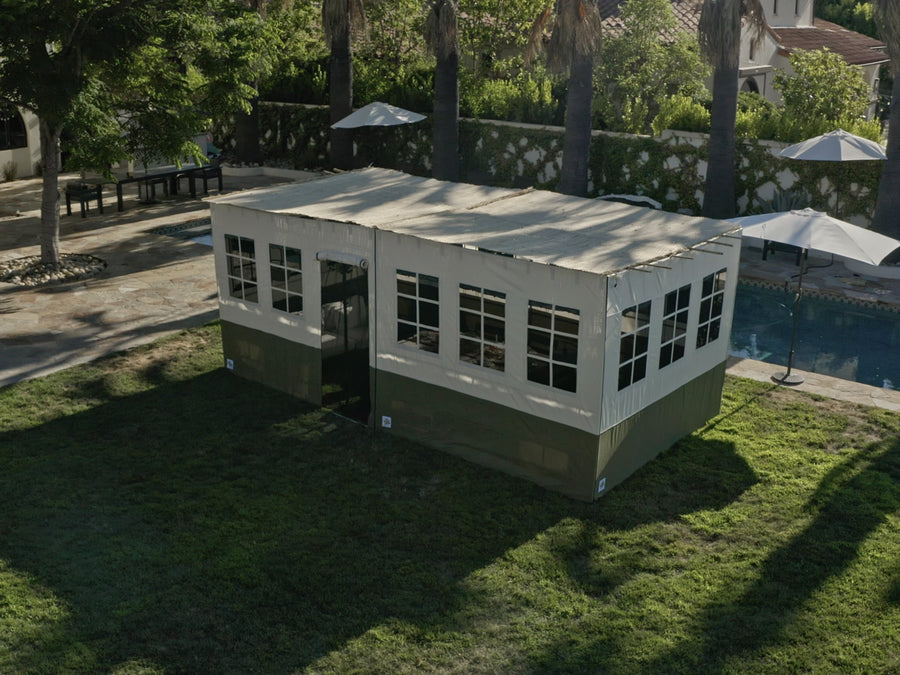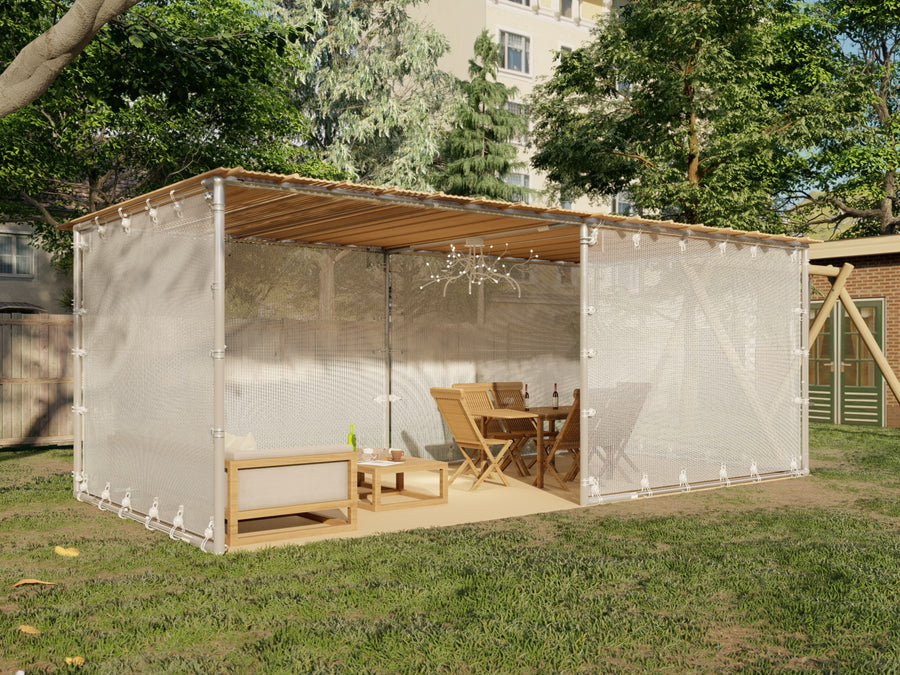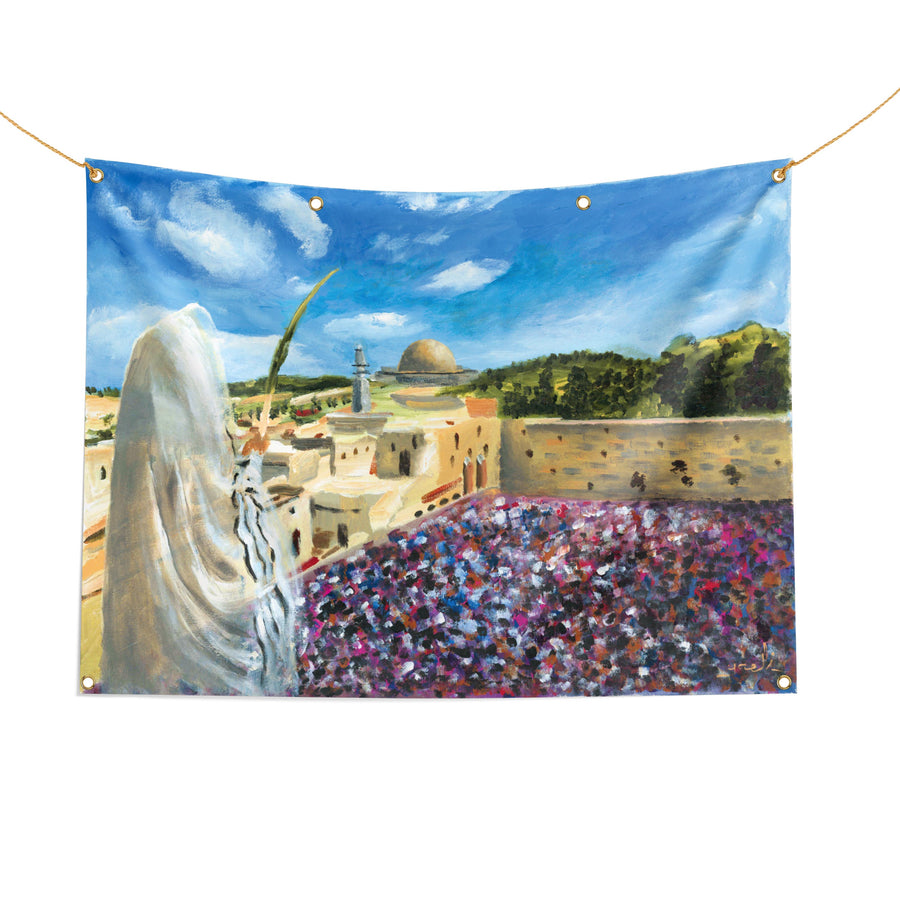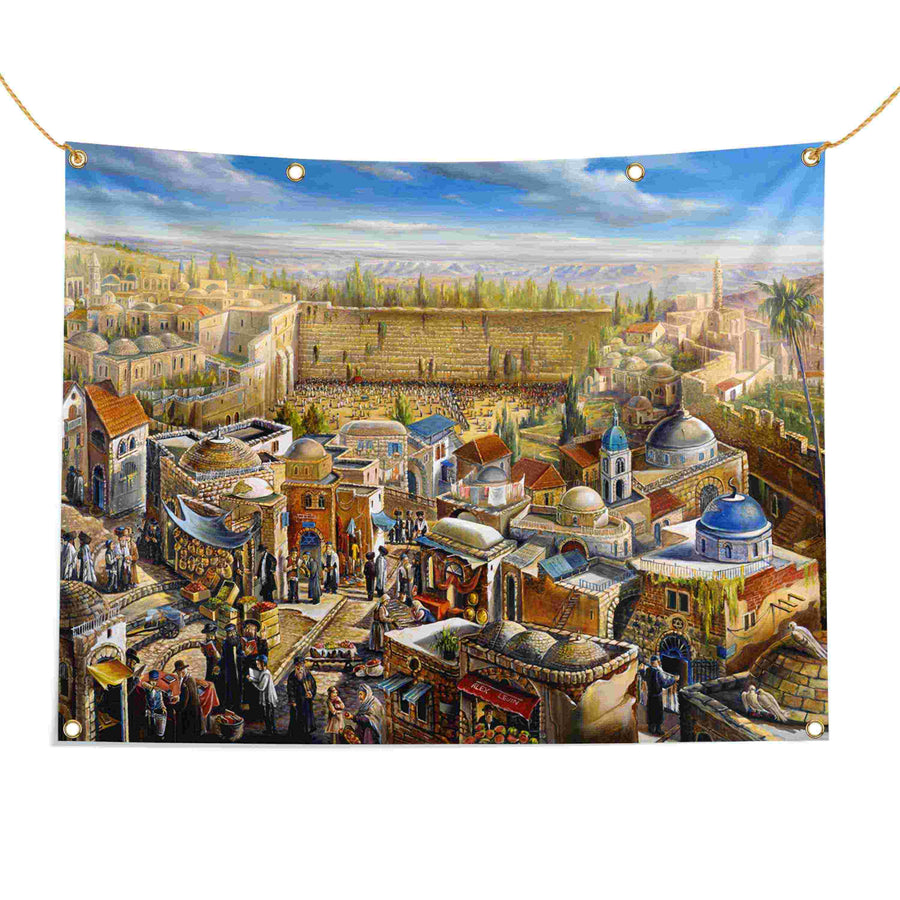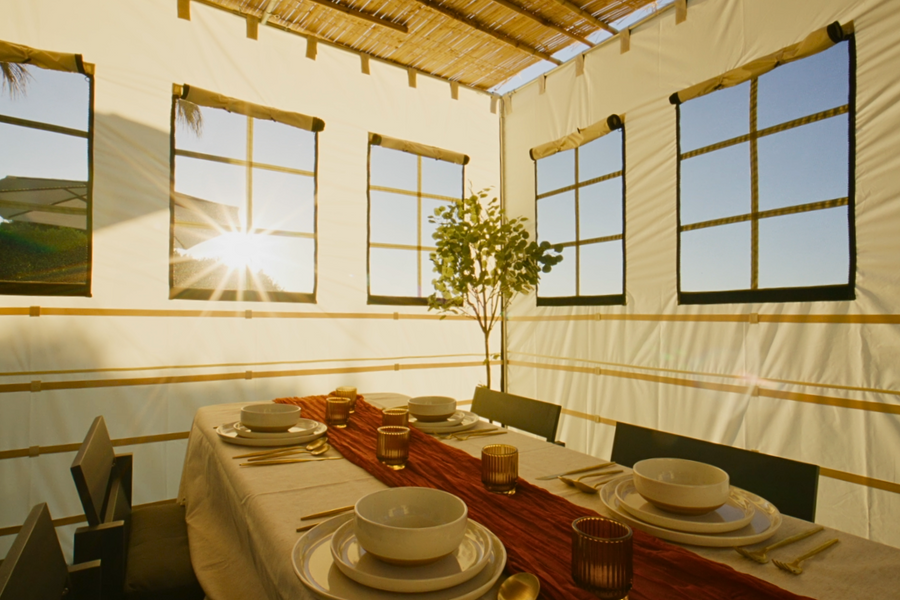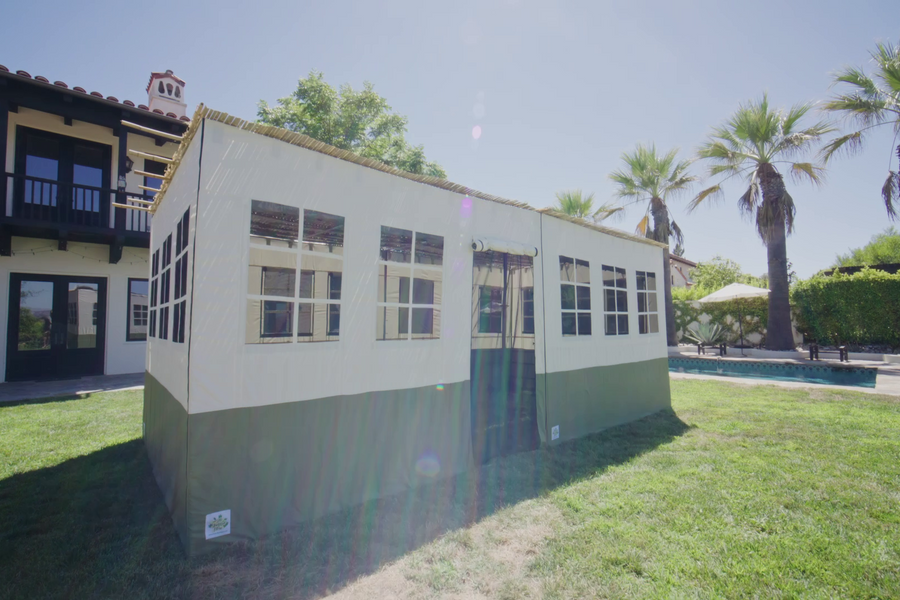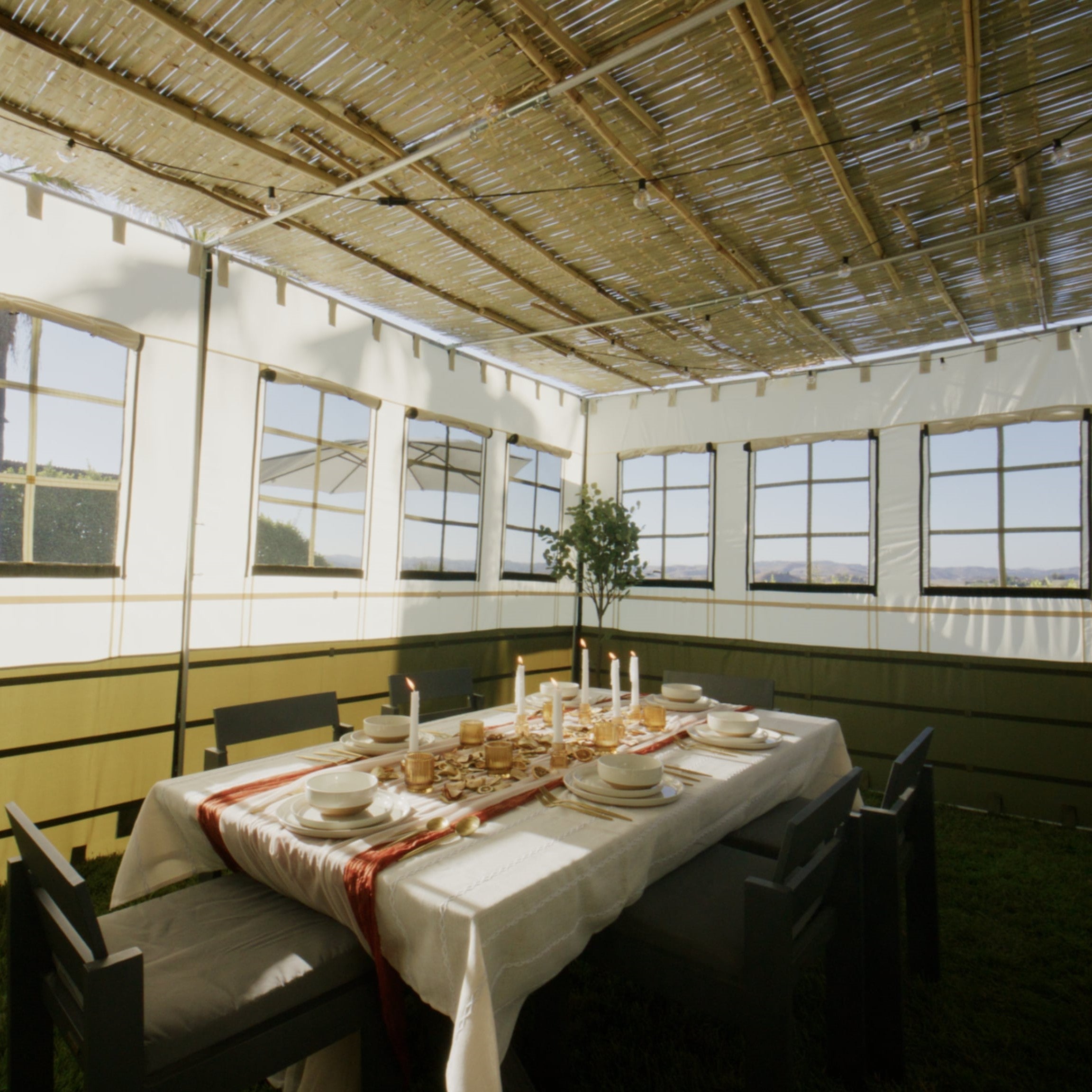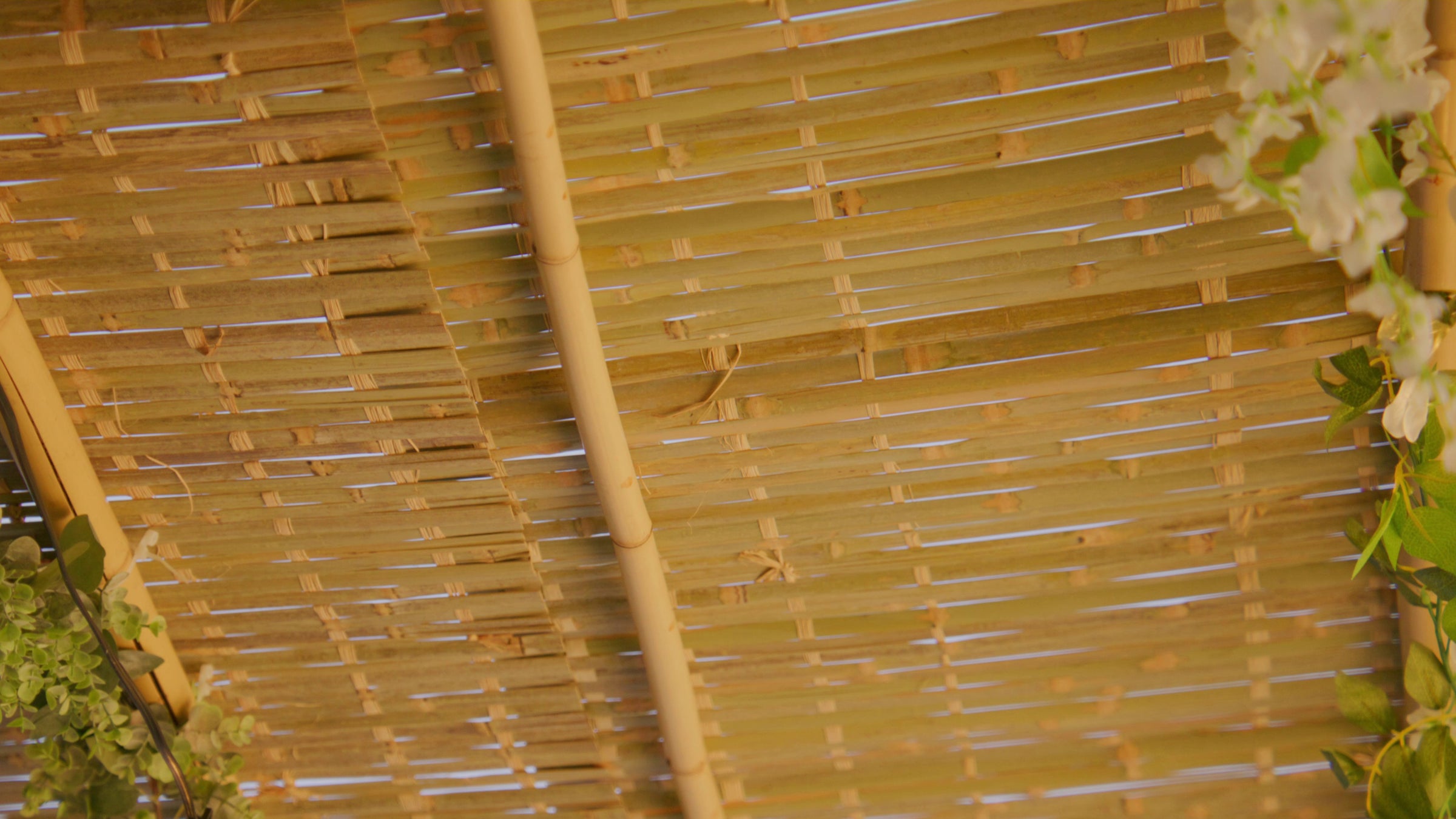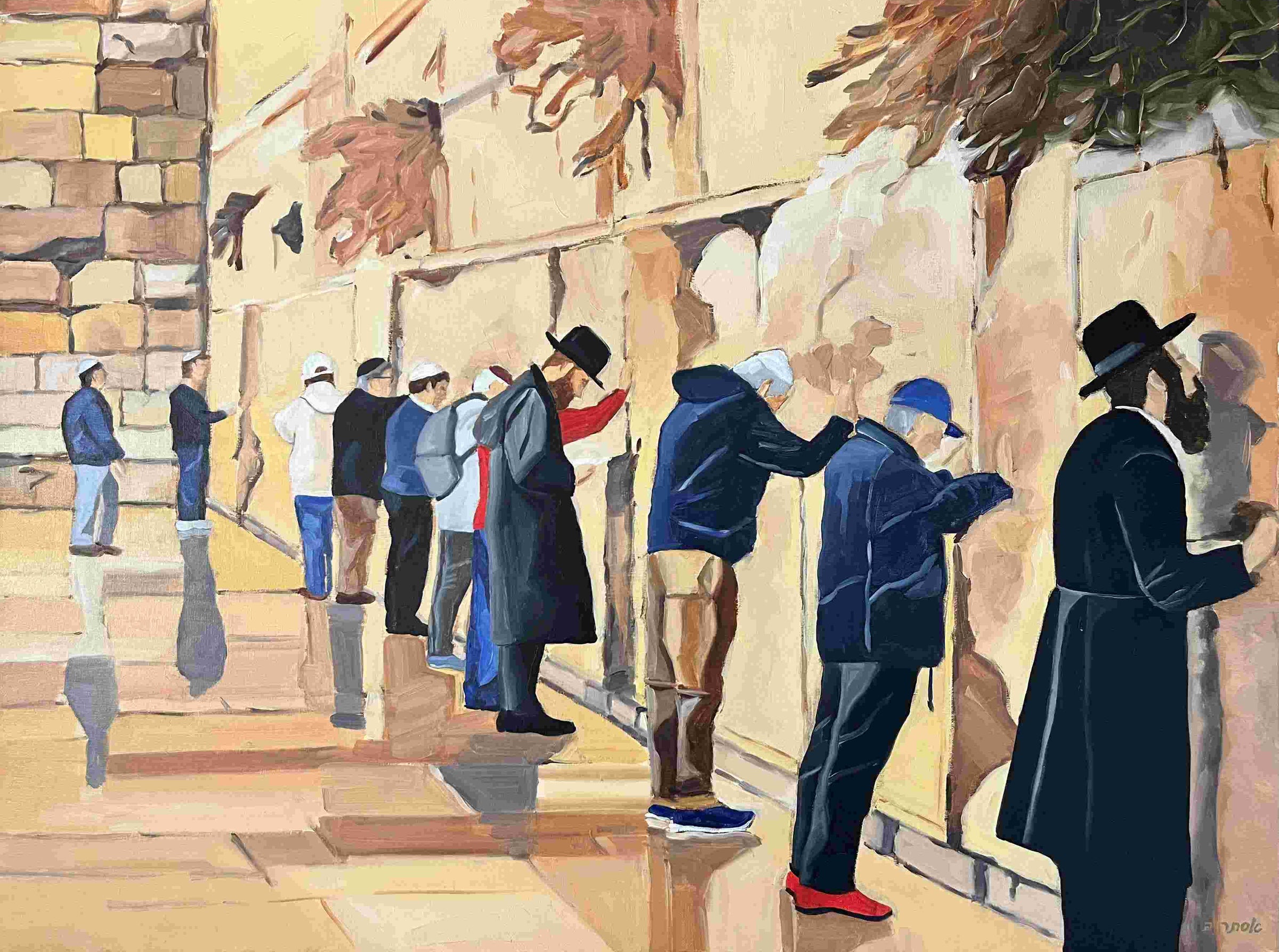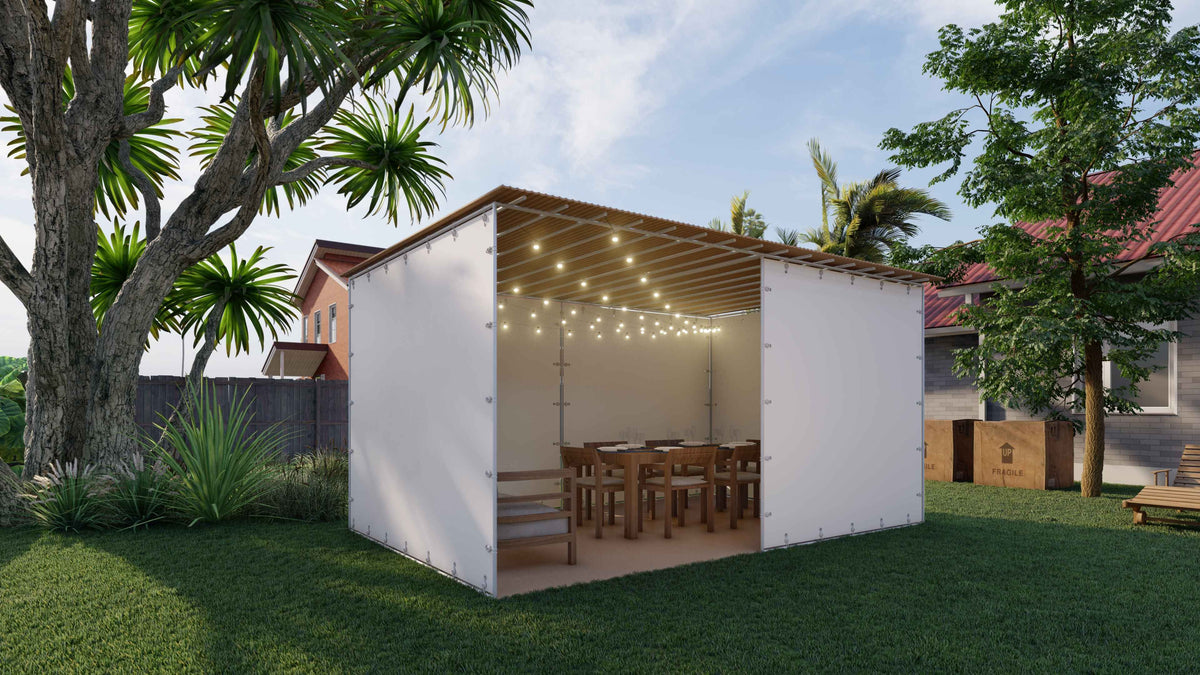

Alright, Yom Kippur's over, you're feeling squeaky clean like a freshly scrubbed lemon, and now what? Time to ditch the couch and build your temporary open-air house!
Sukkot is kind of like Jewish camping with some seriously delicious food thrown in. We build a temporary hut called a Sukkah (think "rustic retreat," not "cardboard box"), spend some quality time with the elements (because, hey, fresh air is good for the soul!), and celebrate Sukkot with some pretty cool rituals and traditions that we’ll go through in a second.
In this short read, you’ll get a bird’s eye view on the basics of how to celebrate Sukkot 2024.
The Sukkah: Your Home Away From Home
Forget the fancy brick houses and plush beds! Sukkot is about getting back to basics with a temporary shelter that reminds you of the temporary shelters our ancestors stayed in during their 40 years wandering in the desert.
So Yom Kippur's done, the fridge is raided clean, and now it’s time to trade in your comfy PJs for some quality time in the garden – it's Sukkah building time! But before you go full-on Bob the Builder, let's break down the essential rules for crafting your new temporary home.
Sukkah Sizing: There’s no maximum width for your Sukkah, but there is a minimum one. We're talking 22”x22”x32” – just enough room for a table and a good book (or to hide from your grumpy uncle). There’s also a maximum height of 31′ 6″.
The Schach ( Sukkah roof): More Shade Than Sun, Please! The Schach needs to be made of something natural that can’t receive tum’ah (ritual impurity), like cedar branches or bamboo mats . Here's the catch: the roof can't be entirely solid! It needs to provide more shade than sunlight, but still have gaps wide enough so that you can enjoy stargazing at night. Think of it as a giant, beautiful sunshade that lets you know when it's time to pack up the picnic because of a surprise rain shower.
Location, Location, Location: Your Sukkah needs to be under the open sky. That means, no awnings, no convenient overhangs from your house – just you, your Sukkah, and the great outdoors (hopefully without any rogue frisbees flying in). And if you’ve run into trouble finding space for your Sukkah, fear not! Our guide to building Sukkahs in small spaces is here to help.
Borrowing vs. Buying: We all love a good deal, but your Sukkah materials can't be, ahem, "borrowed" without permission. No five-finger discounts at Home Depot! This is a celebration, not a heist.
Bonus Tip: Feeling creative? Building your own DIY Sukkah is half the fun! Just make sure you follow the rules for what makes a Sukkah kosher (and maybe skip the leftover wallpaper from Aunt Estee's basement for Sukkah decoration ).
Sukkot is ideally a week-long outdoor dining experience. In fact, the goal is to spend as much time in your Sukkah as possible – that means all mealtimes, and according to some, even sleeping in the Sukkah too!
For more on what needs to be eaten in the Sukkah , by whom, and on what days of Sukkot, take a look at our handy guide to the laws of spending time in the Sukkah.
Now that you've got the Sukkah basics down, it’s time to move onto the Four Species.
The Four Kinds: Your Bouquet of Holiness
One of the unique rituals of Sukkot is the taking of the Four Kinds. Here's a quick breakdown:
The Four Kinds are:
Etrog : A citron, a citrus fruit with a bumpy rind.
Lulav : A long, green palm frond.
Hadassim : Three sprigs of myrtle twigs.
Aravot : Two willow branches.
Before Sukkot begins, the hadassim and aravot are bound together and attached to the lulav.
Each day of the festival (except Shabbat), there's a special blessing recited while holding the lulav bundle in your right hand, and the etrog in your left.
On the first day of Sukkot (or the first time you perform the ritual on Sukkot), you'll add another blessing ‘shehecheyanu’ while holding the Four Kinds.
Finally, the grand finale! You gently wave the Four Kinds in all six directions: up, down, left, right, forward, and backward (see our handy guide for the exact procedure of ‘taking the Four Kinds’ ).
The Midrash explains the significance. The Four Kinds actually represent four different types of Jews (see our article for more on these four kinds of people .). By waving them together, we underline the importance of Jewish unity, highlighting that at our core, we are all one.
Simchat Beit Hashoeva: The Biggest Party in Ancient Israel
On Sukkot, G-d decides how much winter rain Israel gets. Back in the Temple days, every sacrifice included wine libations, poured over the altar. But on Sukkot, they added a special twist: WATER!
Yep, a whole ceremony dedicated to H2O, where water was also poured over the altar. This ritual was so joyous, it sparked an all-night party called "Simchat Beit Hasho'evah." Think music, singing, and celebrating rain like it's going out of style!
Even without the Temple, that spirit lives on. We still have nightly celebrations with music and dancing (and even live music during the intermediate days of Sukkot) to celebrate this joyous ceremony.
Sukkot's Finale: Hoshanot and Hoshanah Rabbah
Each day of Sukkot, Jews recite extra Psalms of praise called Hallel with the Four Kinds in hand during the weekday (although not on Shabbat). After Hallel, they transform the synagogue into a track, circling around around the bimah with the Four Species, chanting alphabetically arranged prayers called Hoshanot, asking for G-d’s divine assistance.
But the real prayer-peak is on Hoshanah Rabbah, the seventh day . This is where a person’s fate for the upcoming year, decided on Yom Kippur, gets its final seal. Seven times we encircle the bimah, the Four Species in our hands. Then, we grab our aravot and after reciting a short prayer, strike them on the ground five times.
One reason for this tradition suggests that the willow branch, the arava, is the thirstiest of the Four Kinds – just like its name "arvei nachal" (river willow) hints. This symbolic beating of the willows is therefore actually a silent prayer for rain.
Simchat Torah: The Torah Celebration
The Torah tells us that after the seven days of Sukkot, we should celebrate an eighth day called Shemini Atzeret/Simchat Torah. Outside of Israel, this day is doubled – that's right, double the yom tov with candles, rest, and NO work. In the diaspora, Shemini Atzeret is celebrated as one day of yom tov and Simchat Torah as another.
Although this bonus eighth day holiday follows Sukkot, it is actually an independent holiday in many respects (we no longer take the Four Kinds nor do we dwell in the Sukkah). However, many diaspora Jews still eat in the Sukkah , just without saying the accompanying blessing.
But the real star of the show is in the synagogue on Simchat Torah. Picture this: the Torah scrolls, usually tucked away and only brought out when it’s time to read from the Torah, get to join a festive parade! They get whisked around the bimah, the central stage, while everyone lets loose with singing and dancing to celebrate having completed reading all 5 books of the Torah that year.
By the time Simchat Torah is over, we’ve embarked on a wild ride – from the somber reflection and repentance of the High Holidays, to the celebratory chaos of Sukkot, and finally, the joyous whirlwind of Simchat Torah. Now it's time to channel this energy into lasting positive change, keeping that inspirational roller-coaster burning bright!
